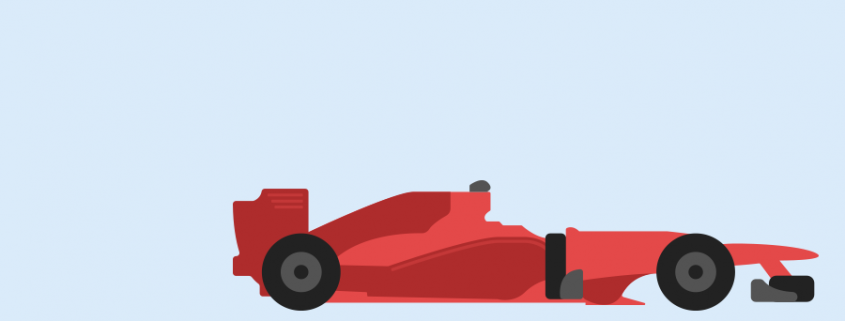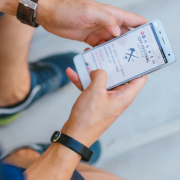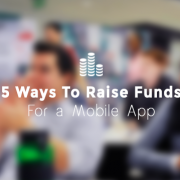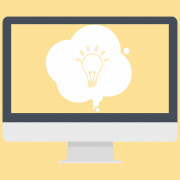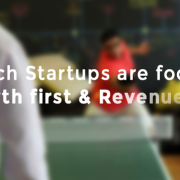6 Fast Tips For Mobile User Experience Design
The main differentiator between a successful app and a ‘fly-by-night’ is the app designers ability to quickly identify how the target user wants to ‘feel’ when using the app. And then designing an experience that supports that ‘feeling’.
This may sounds a bit touchy-feely but every user has an objective in mind. And that objective is their primary purpose for using your app. And whether they’re seeking entertainment, are in need of a utility, or something completely different, the designers job is to ensure they are able to get what they want quickly.
The first person to meet that need is the person who wins.
Every app user has a level of sophistication. That means if they’re not at all tech-savvy then the design layout should be very directive and easy to use.
In addition to this, their personality will either be masculine, feminine or somewhere in between. This changes the colour scheme we use, our selection of words, etc. But that’s for another day…
In this post I’m going to shoot you 6 fast tips that we use in-house to create our clients mobile user experience designs.
Definition of Mobile User Experience Design
User experience (UX) involves a person’s emotions about using a particular product, system or service. It highlights the experiential, affective, meaningful and valuable aspects of human-computer interaction and product ownership.
In essence, with mobile user experience design you need to design how you want the user to feel when interacting with your app. The question is how do you find out how they want to feel?
1. How does the user wants to feel?
In order to identify the key emotions that will drive the experience you first need to get to know your ideal user.
We’ve designed a framework that you can use to quickly identify core attributes about your user and their behaviour. Based on this you can make educated assumptions about what emotions they are most attracted to, or what emotions repel them. Check out our Framework for Building a User Persona.

2. Design needs to be ‘Intuitive’
We hear it all the time yet hundreds, if not thousands of app developers get it wrong every single day. The key is to design for the subconscious mind. Navigating through an application should not be a conscious function. If it’s a conscious effort then your users will get tired and frustrated – naturally. The use of cognitive thought (problem solving and front-of-mind-thinking) dispels a tonne of energy and tires your mind.
‘Designing for the sub-conscious mind’ may sound like complex but when you de-construct the process it’s actually quite easy. When designing your screens keep these four ideas in mind:
a) Directive design – Tell your users what you want them to do. Remove the guess work. Use arrows, bold texts, bright colours to show them exactly what you want them to do. If you can’t do this then there is probably too much going on in your app. Go back to the drawing board, strip out non-core-functions and focus on what’s important.
b) Familiar framework – Use icons and words that people already know and understand. Look at websites like pttrns.com to gather ideas for styles, frameworks, icons, etc. that have already been used by other popular apps.
c) Beautiful – A beautiful design will go a long way. Just be careful not to trade ‘beauty’ for practicality and ease-of-use.
d) Minimalistic – Less is more. By removing buttons, features and other clutter from your interface design you can draw users attention to the options that are most important.

3. Identifying key features
The first step to designing a beautiful mobile app user experience is by identifying what features are most important, least important and what your overall goals are. I use a technique where I group the features and functions into the following categories:
a) Core functions
b) Other popular options
c) Your goals/key objectives of the app
d) Less popular options
The Core functions need to be accessible from almost any screen because they get used the most. Other popular options aren’t as important but we need to know where they stand in terms of popularity. Your goals (or key initiatives) are what you want the user to do, ultimately.
Generally your key initiative is to either make money directly from the app. Or perhaps your first mission is to build a user base in which your key initiative is to get users to keep using it and invite their friends to the application. Another smart key initiative which is growing in popularity is the aim to first validate the concept by ensuring people love the idea. Take a look at the Startup Guide for a greater insight into this way of thinking.
The aim with the less popular options is to remove them altogether or to simply find somewhere to hide them in the app.

4. Designing your screens
I get inspiration from other apps. I like to look at different app styles to find a pattern that works in similar ways to the application at hand. This can be tricky at first but after designing apps for long enough you begin to see frameworks that work well for different types of apps based on their core functionality.
Using another pattern (with my own ideas and ideas from my team) I start filling in the most convenient spaces/buttons with the core functions and features. By convenient I mean the areas where your eyes are drawn to first (top) and parts that are easily reachable with the human thumb(s).
Turn your goals into activities, e.g. Share to Facebook, or invite a friend, etc. Use existing patterns and position them so that they are easily accessible from the ‘core functions’ and ‘popular options’. I mean, if your goal was to get users to buy your in-app purchases you wouldn’t hide it in the settings screen…on the other hand, that’s a great place to bury the less popular options.

5. User Scenarios
Put yourself in the users shoes. Run through the process for achieving each of the user’s objectives (their reason for using your app) to get a better understanding of how people will use your application.
If you’re not sold on how it’s currently working then shift some things around. At the end of the day you’ll never really know how people will use your app and what they truly want until you start collecting some feedback. This can be done through a number of means but mobile app analytics is a great way to track user behaviour once the app is live on the App Store. Check out this blog on 10 most popular feedback tools.

6. Test all assumptions
Let’s face it, we’re doing a lot of guessing here aren’t we? I mean how do we really know that our design will work for our ideal user? So it’s important that we test our assumptions against real people to find out if our way of thinking resonates with their way of doing.
Be open and ready to act on all negative, positive and constructive feedback. Remove your own emotions – yes it hurts but you need to look at it objectively. If 10 out of 15 people say “You need feature X” then it’s pretty clear what you should do.
Thanks for reading, and if you have any feedback…my ears are open and I’m ready to receive!
Related articles:
Holly McKee
Latest posts by Holly McKee (see all)
- Are you considering ‘Mobile Accessibility’ in your App Product Planning? - May 11, 2017
- 6 Fast Tips For Mobile User Experience Design - April 13, 2017
- UX: 5 Do or Die Tactics for Successful Mobile App Onboarding - February 24, 2017

